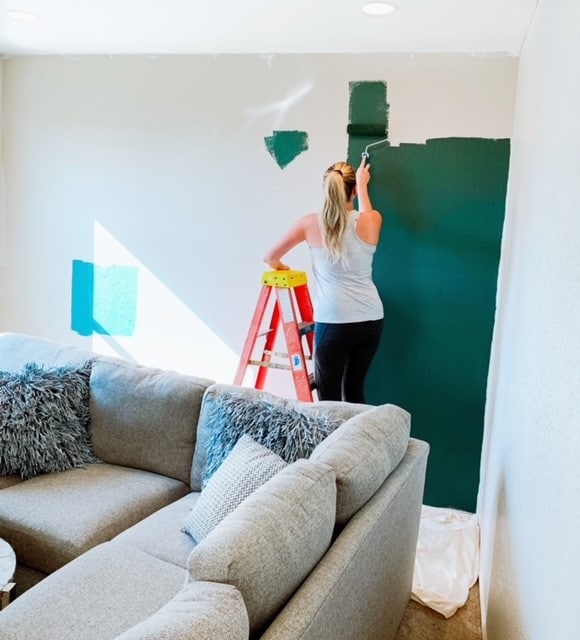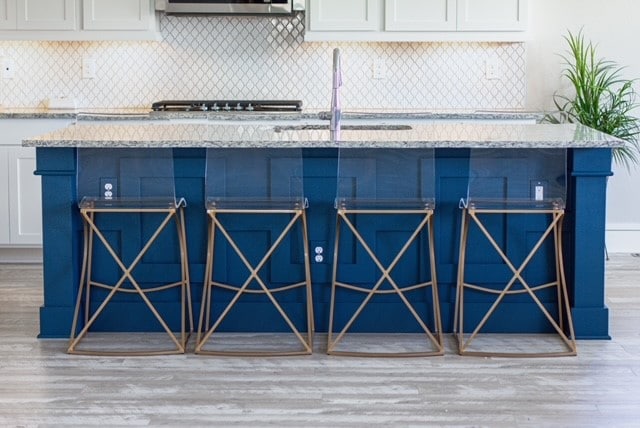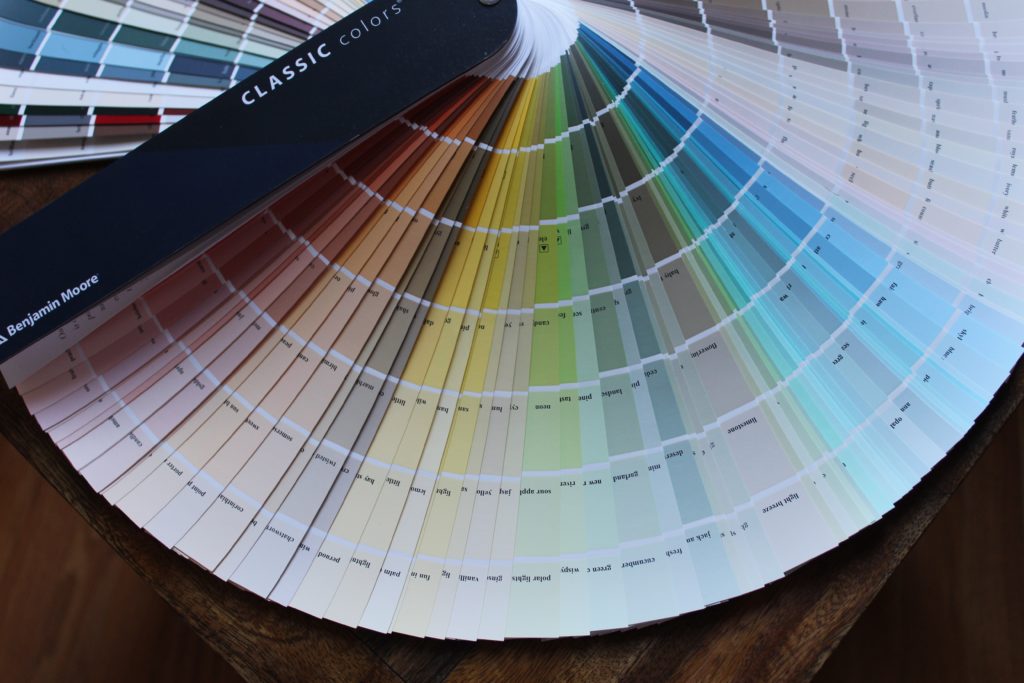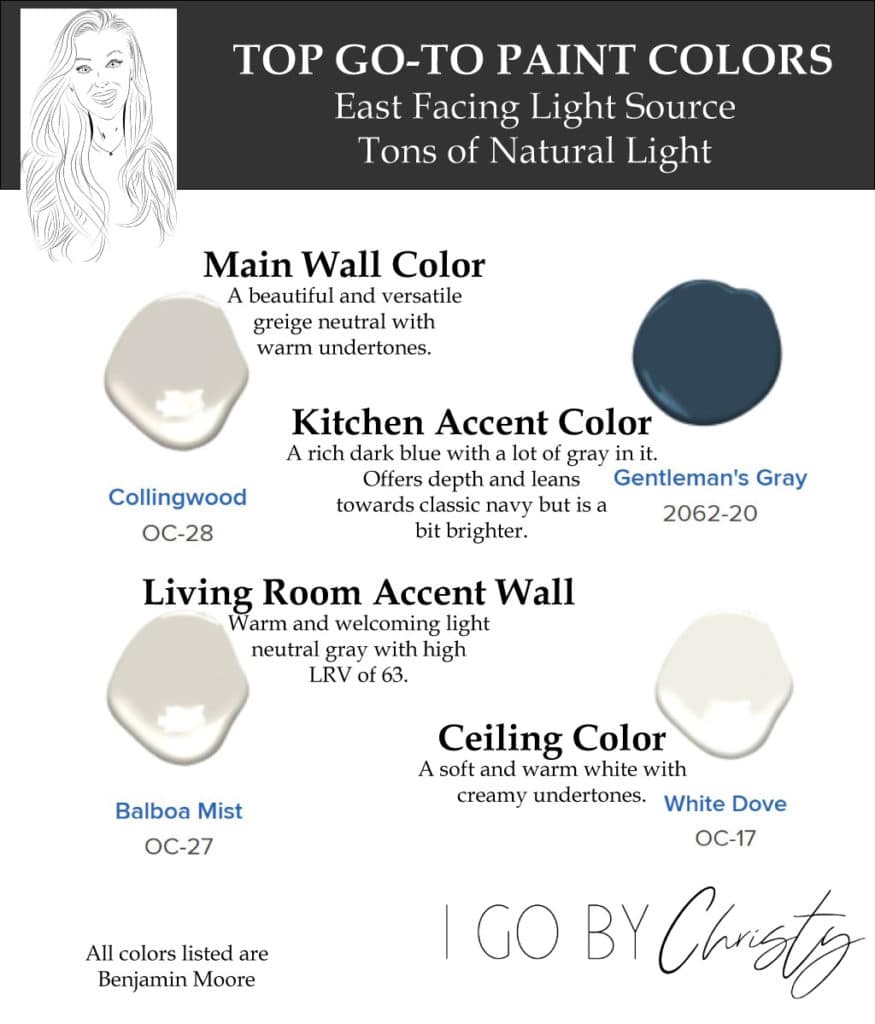
Paint and I have a love-hate relationship. When my husband and I decided to renovate our first home I had no idea how choosing the correct paint color was such an integral part of achieving your desired end result.
We are now in the middle of our second home’s renovation process and I can say the amount of knowledge I’ve gained on the topic of paint through my trial and errors is quite extensive and honestly a bit comical.
This second home’s paint selection process took my painting knowledge to a whole new level. The home is a west facing, open concept with two story rooms and has a ton of windows. So my biggest challenge was how to choose the best paint colors for rooms with lots of natural light coming in from the East.
If you are planning on having your home painted and you too find yourself in the situation where you have tons of natural light coming in these next tips are for you!
First we have to quickly cover the three basics of paint:
Light Source
Undertone
LRV

Natural Lighting
Natural light plays an integral part in how we perceive paint colors in the home. The direction of how light hits a wall and the different positions of the sun moving throughout the day has a major influence on the color and how it appears to the naked eye.
A general rule of thumb:
- NORTH: Indirect, cool undertones. North facing rooms generally do not receive much direct sunlight. This means cool toned colors will be magnified. Try choosing a warmer undertone in your paint color to help offset this.
- EAST: Bright in morning, Cooler in the afternoon. Due to these rooms receiving both types of light usually a dark color does well. Choosing a warm undertone will help offset any coolness coming from the afternoon light making a saturated color not feel too dark.
- SOUTH: Direct, warm undertones throughout the day. Intense light throughout the day makes choosing the right color important. Darker colors will appear brighter and too light of a color can appear washed out.
- WEST: Cool in the morning, Bright in the afternoon. The reverse from East facing rooms. Dark saturated colors will be intensified and generally light colors with warm undertones do best in these rooms.
I can not stress the importance of sampling wall colors before you decide to buy the full size and paint enough! The same color can change drastically from one room to the next based of the amount of natural light offered in the room.
Undertones
A paint colors undertone sets the mood and feeling of a room.
Cozy and Energetic – Stick with warm undertones like: yellow, orange or red.
Fresh and Soothing – Stick with cool undertones like : blue, green or purple.
Once you solve the mystery of undertones and know what to look for in choosing a paint color the chances of picking the wrong color diminishes greatly and it becomes significantly easier to match paint colors throughout your home.

LRV a.k.a. Light Reflectance Value
Every paint color has an LRV. What it stands for is the percentage of light a paint color reflects.
The darker the paint color the lower the LRV. (Darker paint colors absorb the light)
The lighter the paint color the higher the LRV. (Whites have the highest light reflection which makes them tricky because the light bounces and can cause the white to pick up the colors around them)
The LRV range is from 0-100
Tips For Choosing The Correct Paint Colors In Bright Rooms
1. Know the direction of which your natural light source is coming in from.
2. Always buy samples and paint 4×4 squares onto different walls of your room. Check the color throughout the day as the sun moves so you can see the true color in different lighting and determine if you like it.
3. Know the mood you are trying to achieve in your room and only pick colors which have that undertone.
– Ask the tech behind the paint counter which is the main color in the mixture. This will tell you it’s undertone.
4. If you are painting a two story room try and stick with warm undertones to create a homey feeling as cool toned colors can make the space feel cold and bare.
5. Most painting companies offer a free color visualizer on their websites. Where you can upload a photo of your space and choose which color you’d like to see placed onto the walls. Sherwin Williams has a great resource called ColorSnap Visualizer which allows you to instantly explore color choices in various home settings.

